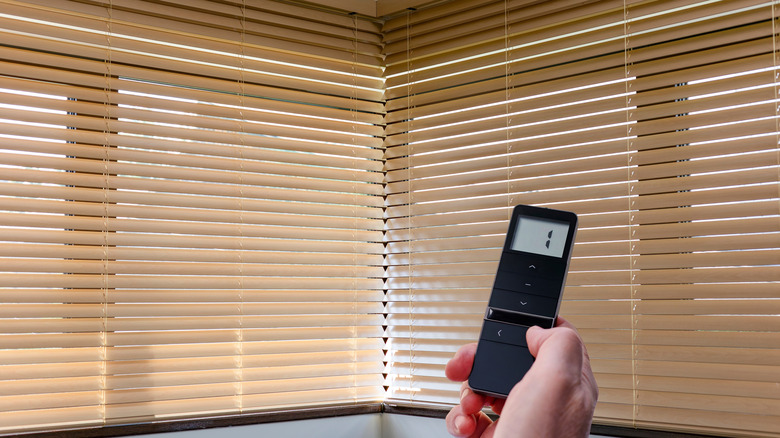Update Traditional Curtains And Blinds With The Window Treatment Trend You'll See More In 2026
Curtain and blind decisions used to hinge on color and length choices, and whether or not they let in enough light or blocked the neighbor's view into your house. Innovation meant following the miniblind trend or updating the wood color of your plantation shutters. But as consumers turned their focus to sustainability, window covering designers added an emphasis on energy efficiency and manufacturers paid attention. Smart blind technology became a must-have for many homeowners, and it's a window treatment trend that's expected to continue. The desire to be able to control your curtains and blinds by voice, with an app, or through a home system from Google or Alexa is projected to increase in 2026, and it isn't just for people who want to buy into the latest trend. Existing window coverings can be updated by being retrofitted with smart home technology.
Smart window treatments, an affordable smart home feature, seamlessly combine form and function. They meet all the needs associated with blinds, curtains, and drapes. They're attractive, come in the necessary lengths and widths needed for almost all windows, and offer a multitude of colors. Insulating window shades, when they're connected to automated controls, can cut energy use by a quarter through regulation of the indoor temperature. This reduction in energy use means you can recoup the cost of smart blinds in as early as three years. Automation can raise and lower blinds or change the angle of the slats, open and close curtains and drapes, and change the opacity of the window covering. The integration of AI will increasingly allow your blinds and curtains to anticipate and react to your needs.
Benefits of smart window covering technology
Smart blinds may be trendy, but they're also an important addition to your home. Beyond making it possible to open and close your window coverings to control the amount of light in the room, they can also reduce your exposure to potentially harmful UV rays. Being able to schedule when your smart window coverings open and close has multiple benefits. If your home is filled with windows, it can take awhile to open or shut each one. But with smart blinds, it can be done automatically. You can choose to set your curtains to act as an alarm clock, waking you with natural sunlight rather than noisy chirps. If you're prone to forgetting to close the blinds at night, an automated system will shut them at a set time. When this function is integrated with other smart tools like lightbulbs, you can walk out of a room knowing it will be buttoned down when the sun sets.
You're familiar with the freedom smart technology can bring to the profoundly disabled who can only use their voice or eyes to indicate their needs, but it's also useful for mobility impaired people and the elderly. The assistance these tools provide for accomplishing day-to-day tasks allows them to age in place by lessening the need for help with otherwise easy tasks. If you're concerned about the privacy risks with smart home devices, and how they may be a drawback for an older relative, use a simple remote instead of a home hub.

